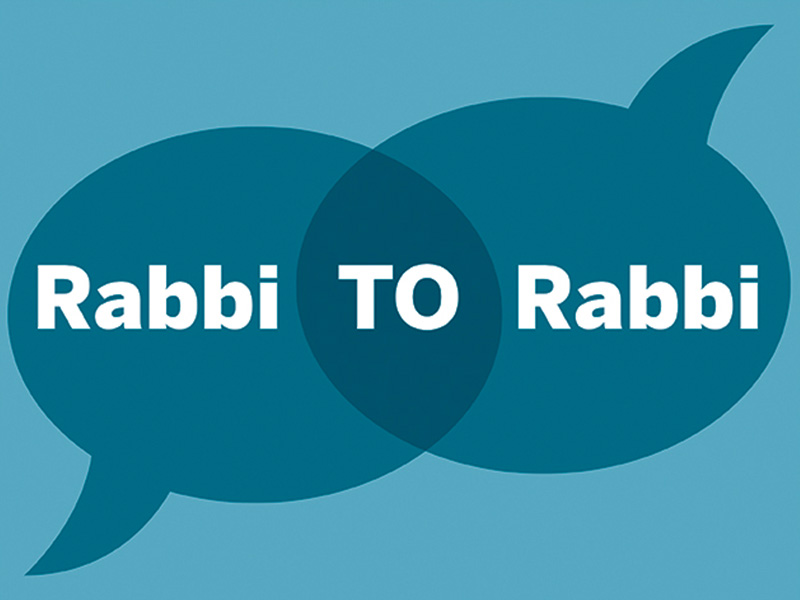In a beit midrash, there are no rules of engagement, other than a commitment to study for the sake of Torah itself and to be open to ideas other than our own
Rabbi N. Daniel Korobkin
Beth Avraham Yoseph Congregation, Toronto
Rabbi Lisa Grushcow
Temple Emanu-El-Beth Sholom, Montreal
Rabbi Grushcow: I’ll be in Jerusalem next month as part of the Shalom Hartman Institute’s Rabbinic Leadership Initiative. One of the reasons I applied for the program is that I welcome the opportunity to study with other rabbis of different denominations. Doing so was a very meaningful part of my rabbinic formation as a Wexner Graduate Fellow, and I count Conservative, Orthodox and Reconstructionist rabbis among my closest colleagues and friends.
Here in Montreal, we also have that inter-denominational collegiality. In fact, one of the other members of my Hartman cohort is fellow Rabbi 2 Rabbi contributor Rabbi Mark Fishman. He and I will not only be studying together this summer, but we’ll also be serving as co-presidents of the Montreal Board of Rabbis this year.
It is sometimes surprising for congregants to find out about these sorts of close connections and mutual respect between rabbis of different denominations. But for most of us, our shared conversations are simply, and happily, part of the Jewish world we inhabit. So here is my question: if you and I could sit together and study a text, what would you want to study?
Rabbi Korobkin: The beit midrash – the Torah study hall – is the best place for two people to meet and share ideas. There are no rules of engagement other than that we both commit to study lishmah – for the sake of Torah itself – and that we are open to ideas other than our own. I’ve often found that studying a familiar text with someone who’s never been to yeshiva provides the most insight, because that individual comes with a new set of eyes and no predetermined rules of how to study that text.
So what would I want to study with you? Here are a few possibilities: Rabbi Yehuda HaLevi’s Kuzari, a masterpiece of Jewish theology written by a Jewish poet and philosopher of the 12th century; chassidic texts, such as Shem MiShmuel, Mei HaShiloach, Sfas Emes, and Sod Yesharim, written by disciples of Rabbi Menachem Mendel of Kotzk, who had an intellectual approach to chassidism; Orot HaTeshuvah and other writings from Rabbi Avraham Yitzchak HaKohen Kook, whose universalistic approach would, I believe, be appealing to you; and, perhaps, some writings from Rabbi Hillel Zeitlin, who grew up in the yeshiva world of the early 20th century, left it for the secular world for a significant portion of his adult life, and then, after World War I, returned to his roots.
Which texts would you wish to study with me?
Rabbi Grushcow: I’d want to study the end of the tractate of Sotah, because I think it has interesting things to say about change. Similarly, I’d want to hear your thoughts on the famous passage in Baba Metzia 59b about how the Torah is not in heaven but in the domain of human beings. I’d want to look together at the story of Kamza and bar Kamza (Gittin 55b), about how internal dissension can lead to disaster, and at the passages regarding the disputes between the schools of Hillel and Shammai. I would also bring some of the modern texts which have been central to my own intellectual and spiritual growth – Dr. Rachel Adler’s theological writing in Engendering Judaism, for example, and some of Rabbi Neil Gillman’s work.
Last, but not least, I like the thought of simply studying the weekly parshah together. As congregational rabbis, this is probably the material with which we engage the most.
Rabbi Korobkin: The Talmud states that just as our faces are all unique, so are our ways of thinking. This is the tremendous benefit of “chavrusa,” the study partner who opens our eyes to new vistas.
The irony is that embracing different perspectives is being shunned by our “enlightened” society. Today’s world consists of “microaggressions,” “trigger warnings,” and “safe spaces.” Some universities and organizations seek to shield their students or members from being exposed to ideas that run contrary to their idyllic intellectual bubbles. But that has never been the path for the student of Torah. We study Torah to find the truth, no matter how “painful” the pathway to that truth-finding might be.
That’s why I welcome the opportunity to dialogue and study with those outside my “shtetl.” I look forward to studying Torah with you in the future.
